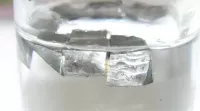SpaceX produces launch vehicles for its launch services and exploration objectives. Currently, it operates the Falcon 9 Block 5 (medium-lift) and Falcon Heavy (heavy-lift), both utilizing reusable first stages and powered by Merlin engines. Starship, a fully reusable launch system, is under development to eventually supersede the Falcon series and Dragon spacecraft.
November 27, 2012: Stratolaunch partners with Orbital Sciences Corporation
On November 27, 2012, Stratolaunch announced a partnership with Orbital Sciences Corporation for an air-launched vehicle study contract. This effectively ended the development of the Falcon 9 Air.
2012: SpaceX and Stratolaunch end contractual relationship
In the fourth quarter of 2012, SpaceX and Stratolaunch amicably ended their contractual relationship. This was because the Stratolaunch launch vehicle design had significantly deviated from the Falcon derivative envisioned by SpaceX and did not align with SpaceX's long-term strategic business model.
May 2013: Falcon 9 Air replaced by Orbital Sciences Pegasus II
In May 2013, the Falcon 9 Air was replaced in the Stratolaunch development plan by the Orbital Sciences Pegasus II air-launched rocket.
December 2013: SpaceX launches first satellite to geostationary orbit
In December 2013, SpaceX launched its first satellite, SES-8, to geostationary orbit. This marked the beginning of SpaceX competing with European and Russian launch providers in the commercial communications satellite market.
2013: ULA requires large annual subsidy
In early 2013, United Launch Alliance (ULA) maintained that it required a large annual subsidy to remain financially viable, despite SpaceX's competitive pricing, citing a lack of market opportunity.
2015: First test flight of the carrier aircraft expected
In 2015, the first test flight of the Stratolaunch carrier aircraft, designed by Burt Rutan and built by Scaled Composites, was originally expected to occur from Scaled Composites' facilities in Mojave, California.
2016: First test launch of the rocket expected
In 2016, the first test launch of the Stratolaunch rocket was originally expected to occur, according to the initial project timeline.
January 10, 2023: SpaceX had four rockets and two Dragon 2s on orbit
On January 10, 2023, SpaceX had a rare coincidence of four rockets (all types of operational and under-development rockets) on all four of its orbital launch pads and two Dragon 2s (both types of Dragon 2s) on orbit.
Mentioned in this timeline

Elon Musk is a prominent businessman and entrepreneur recognized globally...

SpaceX founded in is a private American aerospace manufacturer and...
California is a U S state on the Pacific Coast...
NASA the National Aeronautics and Space Administration is an independent...
Canada is a North American country the second largest in...

Lithium Li atomic number is a soft silvery-white alkali metal...
Trending
22 days ago Marcus Freeman: Notre Dame coach considered for Giants head coaching vacancy in NFL.
Emeka Egbuka is an American football wide receiver for the Tampa Bay Buccaneers of the NFL He played college football...

7 months ago George Wendt, 'Cheers' Star, Remembered Fondly After Death; Sudeikis Shares Memory

2 months ago LoL Worlds 2025: T1 vs Gen.G Final Forecasted to Break Viewership Records

5 months ago Ukraine and Russia Complete Prisoner Exchange: Over 1,000 Return Home
1 month ago Polls Indicate Negative Voter Sentiment Towards White House Handling of the Economy.
Popular

XXXTentacion born Jahseh Dwayne Ricardo Onfroy was a controversial yet...

Ben Shapiro is a prominent American conservative political commentator media...

Candace Owens is an American conservative political commentator and author...

William Franklin Graham III commonly known as Franklin Graham is...

Tucker Carlson is an American conservative political commentator known for...
The Kennedy Center Honors are annual awards recognizing individuals and...